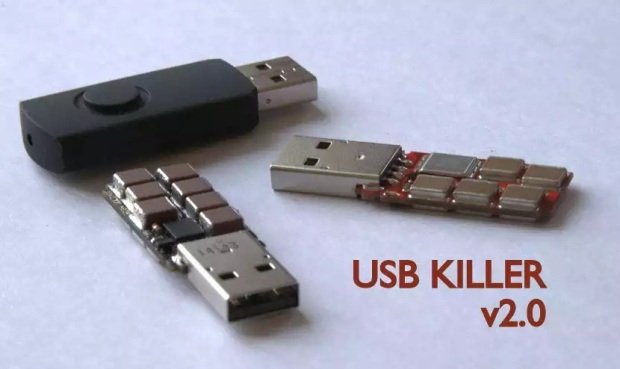Plus a new, stealthy “anonymous” stick, because that’s what the world really needed.
Remember the USB Killer stick that indiscriminately and immediately fries about 95 percent of devices? Well, now the company has released a new version that is even more lethal! And you can also buy an adaptor pack, which lets you kill test devices with USB-C, Micro USB, and Lightning ports. Yay.
If you haven’t heard of the USB Killer before, it’s essentially a USB stick with a bunch of capacitors hidden within. When you plug it into a host device (a smartphone, a PC, an in-car or in-plane entertainment system), those capacitors charge up—and then a split second later, the stick dumps a huge surge of electricity into the host device, at least frying the port, but usually disabling the whole thing. For more information on its technical operation, read our original USB Killer explainer.
The new USB Killer V3, which costs about £50/$50, is apparently 1.5 times more powerful than its predecessor, is more lethal (it pumps out eight to 12 surges per second), and is itself more resistant to setups that might cause the USB Killer to fry itself. A spokesperson clarified this last point to Ars: “The V3 is engineered to withstand short-circuit configurations, intentional or otherwise. Typically, when a host device fails, it will either fail to an open circuit, or a closed circuit. If a short-circuit isn’t detected, the USB Kill would essentially continue to discharge into itself, i.e. suicide.”
Since we last reported on the USB Killer, it seems the Hong Kong-based company has also secured FCC approval in addition to the European CE mark. This essentially means the USB stick is human-safe and won’t electrocute you.
A slightly more nefarious development, though, is that there’s now an “anonymous” model that looks like a boring, black USB stick. Previously the USB Killer was white with a geeky decal on the side, but, now, thanks to “huge demand” from “penetration testers and police/government users,” there’s a USB Killer that just fades into the background. (You can still buy the white model. Perhaps so you’re less likely to accidentally plug it into your own PC, or something.)

Working as a cyber security solutions architect, Alisa focuses on application and network security. Before joining us she held a cyber security researcher positions within a variety of cyber security start-ups. She also experience in different industry domains like finance, healthcare and consumer products.












